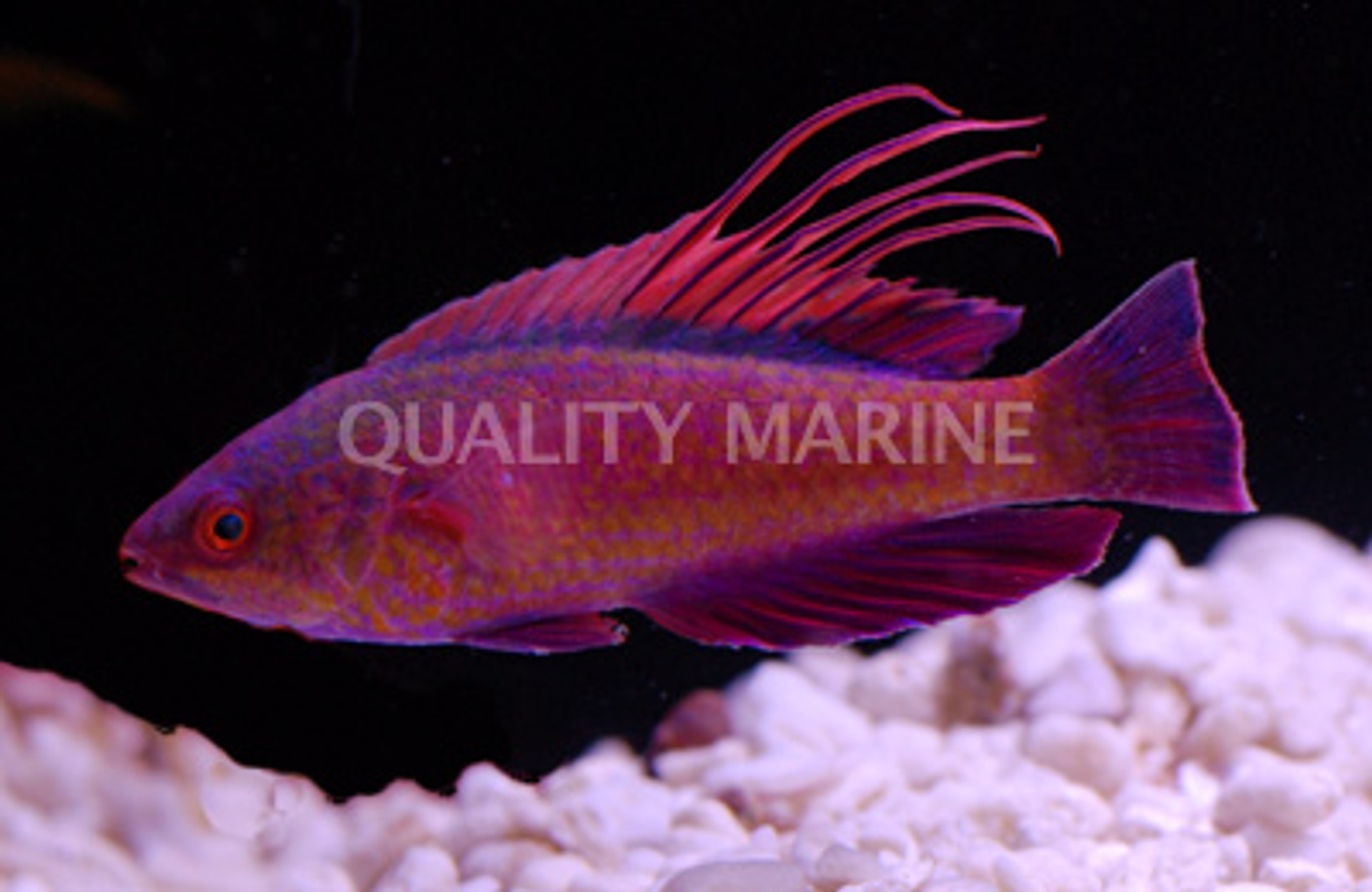Line-spot Flasher Wrasse (Paracheilinus lineopunctatus)

When you belong to a genus of stunningly beautiful fishes, its easy to get overshadowed. This might be the case for the Line-spot Flasher Wrasse, an underappreciated gem from Paracheilinus. Though it is regularly available at an affordable price and boasts some truly lovely colors and elaborate fin modifications, this resplendent little fish is all too often overlooked in favor of some of its close cousins.
But the story of Paracheilinus lineopunctatus is an interesting one, filled with mysteries that have yet to be investigated. The species belongs to a widespread complex distributed throughout much of the West Pacific and Micronesia. Here we find such stalwarts as P. bellae, P. cyaneus and P. filamentosus, along with newer entries like P. nursalim, P. waltoni, P. xanthocirritus, and P. paineorum. Each of these has carved out its own small slice of this region, with limited overlap occurring among them. In areas where neighboring populations abut one another, hybridization is surprisingly common.
Morphologically, these flasher wrasses all possess filamentous extensions to the dorsal fin rays, the extent of which varies within and between species. They also, with just one exception, have the upper and lower lobes of the caudal fin dramatically elongated into a lyrate shape. That exception is P. lineopunctatus, the only member of this group endemic to the Philippines, which instead has a rounded caudal fin shape similar to what we see elsewhere in the genus (e.g. P. carpenteri, P. mccoskeri, etc).
So why has this one species reverted to having the typical rounded caudal fin when all its closest relatives feature such extravagant modifications? This is a question without a satisfying answer. The Central Philippines is a hotbed for speciation among coral reef fishes. During periods of lowered sea levels, the region becomes largely disconnected from neighboring parts of the Coral Triangle. Perhaps this isolation nudged the ancestral P. lineopunctatus into hybridizing with the P. carpenteri that live alongside it (which together regularly form vast mixed-species shoals)? Or maybe its strange tail is simply a mutation brought about in the distant past by rampant inbreeding?
Whatever the case, the Line-spot Flasher Wrasse, named for its subtle pattern of lines and spots, makes for a sensational addition to reef aquariums. Mature specimens top out at around three inches and can be kept alongside any number of other peaceful tankmates, including most smaller wrasses. Males are, naturally, antagonistic towards one another, so one to a tank is recommended for all but the largest of systems. Females are duller in appearance and lack the fancy dorsal fin; they are rarely exported, but could be housed alongside a male.